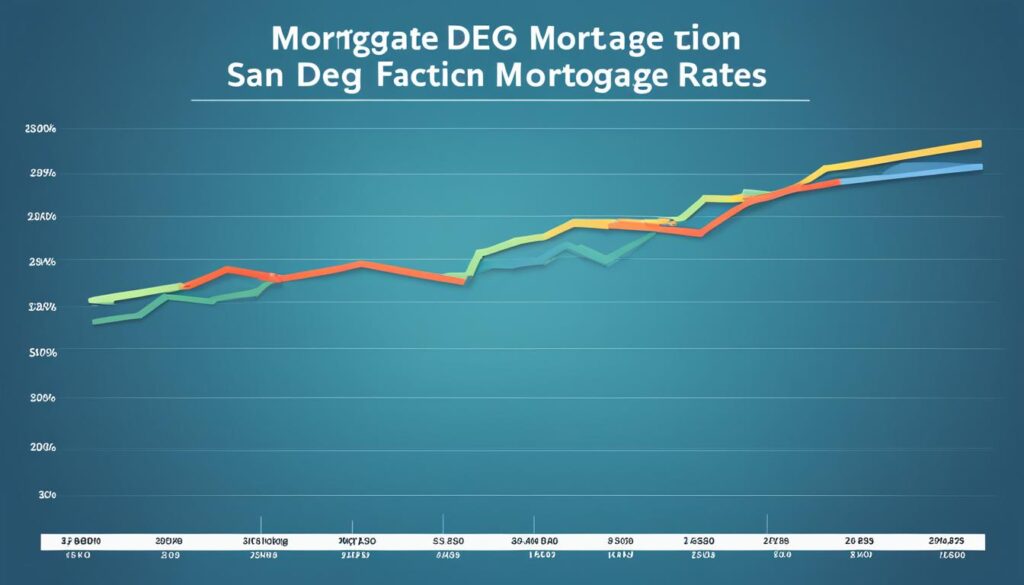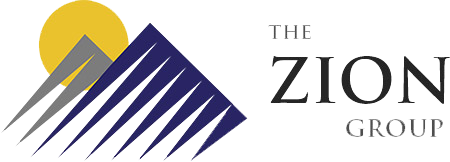Did you know that San Diego mortgage rates have a significant impact on home buying decisions? Whether you’re a first-time homebuyer, a savvy investor, or simply interested in the local housing market, understanding the influence of mortgage rates is crucial.
Mortgage rates directly affect the cost of borrowing money to finance a home, meaning they can greatly impact your monthly payments and overall affordability. With San Diego being one of the most sought-after real estate markets in the United States, the trajectory of mortgage rates is a key factor to consider when making buying decisions.
Key Takeaways:
- San Diego mortgage rates play a crucial role in homebuying decisions.
- Understanding the impact of rates is important for first-time homebuyers, investors, and anyone interested in the local housing market.
- Mortgage rates affect the cost of borrowing money for a home, impacting monthly payments and overall affordability.
- The trajectory of mortgage rates in San Diego is influenced by various factors, including economic conditions, supply and demand dynamics, and regional factors unique to the area.
- By analyzing historical trends, current market analysis, expert opinions, and forecasts, individuals can make informed decisions and navigate the ever-changing landscape of mortgage rates in San Diego.
Historical Perspective on San Diego Mortgage Rates
To understand the current state of San Diego mortgage rates, it is essential to examine their historical trends. San Diego has experienced various fluctuations in mortgage rates over the years, influenced by economic forces, significant milestones, and global economic factors. Exploring the historical context provides valuable insights into the patterns and factors driving San Diego’s mortgage rate movements.
Periods of Stability and Fluctuations
In the late 1970s and early 1980s, San Diego experienced high inflation and soaring mortgage rates. This period saw rates reaching unprecedented levels due to economic factors and government policies.
However, in the subsequent decades, San Diego witnessed a gradual decline in mortgage rates. The 1990s marked a period of stability with lower rates, providing favorable borrowing costs for homebuyers and stimulating the local housing market.
The early to mid-2000s brought historically low mortgage rates for San Diego residents. These low rates contributed to increased economic growth and a surge in real estate activities. However, this period was followed by volatility caused by the housing bubble and financial crisis of 2008, leading to significant fluctuations in mortgage rates.
The Impact of Major Events and Government Policies
Major events, such as recessions, and government policies have played a significant role in shaping San Diego’s mortgage rate trends. These factors include but are not limited to changes in monetary policies, regulatory measures, and global economic uncertainties. Each event and policy decision has had its unique impact on mortgage rates and borrowing costs.
Current Economic Climate and Mortgage Rates
In recent years, San Diego mortgage rates have remained relatively low due to accommodative monetary policies by the Federal Reserve. This low-rate environment has provided opportunities for individuals looking to buy homes or refinance existing mortgages.
However, it’s crucial to note that mortgage rates can still experience fluctuations due to various economic factors and government policies. Staying informed and understanding the historical context of San Diego mortgage rates allows individuals to make informed decisions in the ever-changing housing market.

| Decade | Trend |
|---|---|
| 1970s – 1980s | High inflation and soaring mortgage rates |
| 1990s | Period of stability with lower rates |
| Early to mid-2000s | Historically low mortgage rates |
| 2008 | Volatility due to housing bubble and financial crisis |
| Recent Years | Relatively low mortgage rates |
Current Market Analysis and Forecasts for San Diego Mortgage Rates
The current market analysis reveals that San Diego mortgage rates, like those across the United States, have been historically low. However, there has been a recent upward trend in rates, with the average 30-year fixed-rate mortgage increasing to around 7.49%. This rise in interest rates leads to higher borrowing costs, which in turn can price some potential homebuyers out of the market and reduce overall demand. An increase in mortgage rates can have a significant economic impact, particularly on real estate transactions.
Despite the challenges posed by higher rates, there are still opportunities for buyers in San Diego’s housing sector. With reduced demand, some sellers are willing to give concessions to incentivize purchases, creating favorable conditions for buyers. The positive outlook for the housing sector is further supported by expert predictions, indicating that interest rates may stabilize or even be lowered in the future.
The current surge in real estate activity is expected to have ripple effects on the broader economy. The housing market plays a vital role in stimulating economic activities and generating demand for housing-related goods and services. Furthermore, the current market conditions and outlook present opportunities for mortgage refinancing, allowing homeowners to take advantage of lower rates and potentially reduce their monthly mortgage payments.
Considering the expert predictions, it is crucial for individuals interested in San Diego’s real estate market to stay informed about the current market trends. By keeping a pulse on the latest analysis and forecasts, you can make strategic decisions and seize the favorable opportunities presented in the dynamic landscape of San Diego mortgage rates.
FAQ
How do San Diego mortgage rates impact home buying decisions?
San Diego mortgage rates play a crucial role in determining homebuying decisions as they affect the cost of borrowing money to finance a home. Higher rates can make monthly payments less affordable and price some potential buyers out of the market, reducing overall demand.
What are the historical trends in San Diego mortgage rates?
San Diego has experienced periods of high inflation and soaring mortgage rates in the late 1970s and early 1980s, followed by gradual declines in the following decades. The early to mid-2000s marked a time of historically low rates, followed by volatility caused by the housing bubble and financial crisis of 2008.
What factors contribute to the fluctuations in San Diego mortgage rates?
Fluctuations in San Diego mortgage rates are influenced by economic conditions such as inflation, employment rates, and GDP growth. Monetary policies implemented by the Federal Reserve, supply and demand dynamics in the housing market, and regional factors unique to San Diego also contribute to rate fluctuations.
What is the current state of San Diego mortgage rates?
Currently, San Diego mortgage rates, like those across the United States, have been historically low. However, there has been a recent upward trend, with the average 30-year fixed-rate mortgage increasing to around 7.49%. Higher rates lead to higher borrowing costs, potentially reducing demand.
Are there opportunities for buyers in the current San Diego housing market?
Despite the recent increase in rates, some sellers are willing to give concessions to incentivize purchases. Additionally, expert predictions suggest that interest rates may stabilize or even be lowered in the future, providing a positive outlook for the housing sector.


Recent Comments